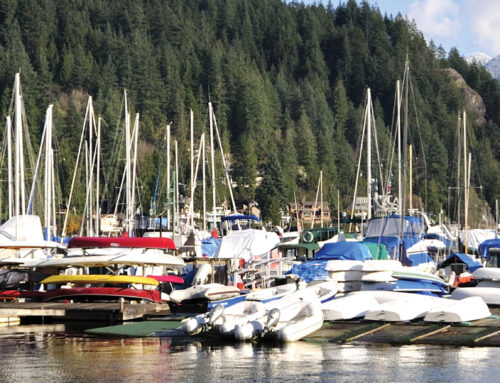Shop Talk: Fine Line Canvas & Upholstery
Contact: Brad Schmeets
Location: Colorado Springs, Colo.
Year established: 2011
Number of employees: 2
Shop size: 3,200 sq. ft.
How did your shop get started?
This is my third shop. I learned to sew in the Air Force, and opened my first shop in 1980 in Alaska, doing furniture. Then someone asked me to do a boat cover, which I really loved doing, so my focus soon became boats. This shop was started after I sold my business on the West Coast. I came for a visit, and my brother-in-law said he had a great place to open a canvas shop.
I thought “1,500 miles from the ocean?” I did some research, and found there were way
more boats here than I imagined. So I moved,
and opened Fine Line, and we have been busy ever since.
What is your product focus?
We do mostly enclosures, cockpit covers, bimini tops and storage covers. We also do quite a bit of interior upholstery.
What unique design elements are built into your products?
We incorporate unique stress relief into our covers so that straps and snaps do not pull out; that makes it easier for the customer to install the cover. I insist that stitching be uniform, that all covers are reinforced in the right areas, and there are no or very minimal wrinkles in our products
Who are your main customers?
We work for a number of boat dealers. We also get a lot of referrals from boat service centers.
Describe your shop layout.
We have two 20-foot overhead doors, and can put two large boats in the shop, or three to four small boats. We have two cutting tables, one at 30 feet by 7 feet with two sewing machines; the last couple of feet is designated as Ozzy’s Place—he is our shop dog. The other table—24-by-8 foot—is a plotting and cutting table. We have two other sewing stations, storage cabinets along one wall and several smaller tables for doing upholstery.
What is your work-flow process?
We have a three-part system: The work order is where all details of the project are recorded. Then there is a time and materials sheet to record time spent and materials used. The third part is for job costing so we can determine if we are making the money we need to make on the project, and that allows us to adjust our estimating. Each project is put into a folder, and then it goes into the job rack and is assigned to the fabricator doing the project. Once the job is completed it is inspected, and then gone over with the customer to make sure everything is up to the standards they are expecting.
How do you deal with scheduling and handling customers?
Like all shops, we tend to overbook work, especially during the busy season. We try to be proactive with our customers. If we see we are falling behind, we call and explain the situation, and do our best to meet the time lines.
Do you create a product that you consider your specialty?
We have a cockpit cover that is unique in the way it’s made, and the reinforcement that is used, as a lot of our customers tow their boats long distances. We needed to come up with something that would take the stress.
Do you use any new or unusual technology?
We just invested in a Laser Products LT-2D3D laser and plotter which has speeded up our patterning, and allows us to go to the marinas and pattern even in wind and light rain. It also allows us to keep a digital pattern of a customer’s boat cover, so down the road, or if something happens to his cover, they can just call, and we can make a new one, right down to the snaps, without the boat being here. It works well with upholstery also.
What are unique things you do to market your business?
We do nothing to market the business, except make raving fans of our customers, which is the best marketing you can have.
 TEXTILES.ORG
TEXTILES.ORG 



